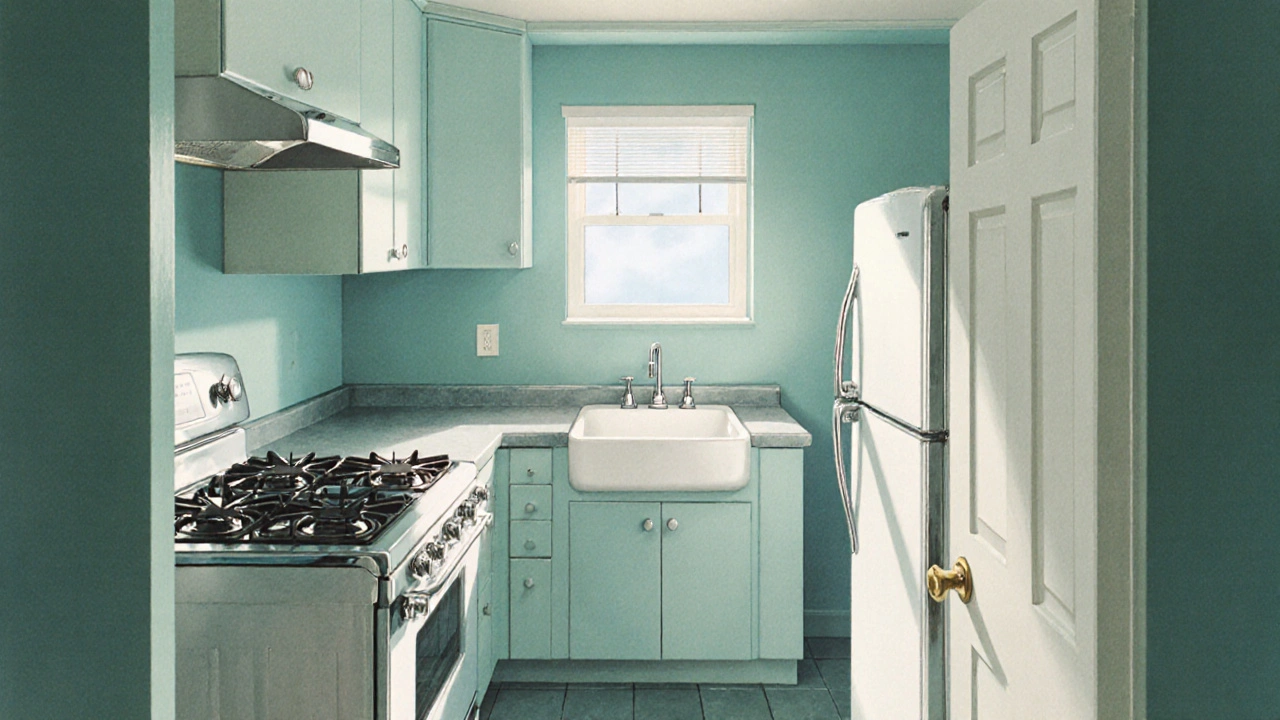Kitchen Work Triangle: The Simple Way to Make Your Kitchen Work Faster
If you’ve ever felt cramped while cooking, the problem is often the kitchen layout. The work triangle is a tried‑and‑true rule that lines up the three main stations – stove, sink, and fridge – in a shape that lets you move without stepping over yourself. It’s not a strict law, but treating it as a guide can save you a lot of extra steps and make meal prep feel easier.
What Is the Work Triangle?
The triangle connects three zones: the cooking zone (stove or range), the cleaning zone (sink), and the storage zone (refrigerator). The idea is to keep the distance between each point short enough to be efficient but long enough to avoid crowding. Most experts recommend each side of the triangle be between 4 and 9 feet and the total sum of the three sides stay under 26 feet. If your kitchen is tiny, you can still follow the principle by making sure the three zones are close together, even if the shape isn’t a perfect triangle.
Why does this matter? When the three zones are placed well, you waste less time walking back and forth. You also reduce the chance of bumping into cabinets or appliances while you’re juggling pots, pans, and groceries. In short, a good triangle means a smoother cooking rhythm.
How to Apply It to Your Kitchen
Start by looking at your current layout. Identify where the fridge, sink, and stove sit. Measure the distances between them. If any side is longer than 9 feet, think about moving an appliance or re‑arranging cabinets. For example, swapping a wall oven for a freestanding range can bring the cooking zone closer to the sink.
If you’re planning a remodel, sketch a quick floor plan on graph paper. Place the three stations first, then fit counters and islands around them. An island can work as part of the triangle, but make sure it doesn’t block the line of sight between the zones. Open‑concept kitchens often use a “modified triangle” where the island houses the cooking area and the sink stays on the perimeter.
Don’t forget traffic flow. Keep the main walkways at least 42 inches wide so you can move comfortably even when the doors open. If you have a narrow kitchen, a single‑wall layout can still meet the triangle rule as long as the three zones line up in a straight line without obstacles.
Finally, test it out. Walk the route you’ll take while cooking a simple dish. If you feel like you’re taking extra steps or reaching over the sink, tweak the layout. Small changes—like moving a spice rack closer to the stove—can make a big difference.
Remember, the work triangle is a tool, not a jail‑cell. Your kitchen should still feel personal and match your cooking style. Use the triangle to guide decisions, then add the features that make you happy, whether that’s a coffee bar, a breakfast nook, or extra storage.
When you get the triangle right, preparing meals becomes less of a chore and more of a flow. Your kitchen will feel larger, your cooking faster, and you’ll spend less time shuffling around. Give it a try on your next remodel or even a simple rearrangement, and notice how much smoother everything moves.

Why the Kitchen Work Triangle Is Outdated for Modern Kitchen Design
Explore why the classic kitchen work triangle no longer fits modern homes, learn zone‑based layouts, islands, ergonomics, and smart appliance tips for a future‑proof kitchen.
view more
Kitchen Triangle Rule Explained: Measurements, Layout Examples, and Modern Alternatives
Understand the kitchen triangle rule in plain English: the measurements, how to plan it, when to bend it, and modern zone-based alternatives that actually work.
view more